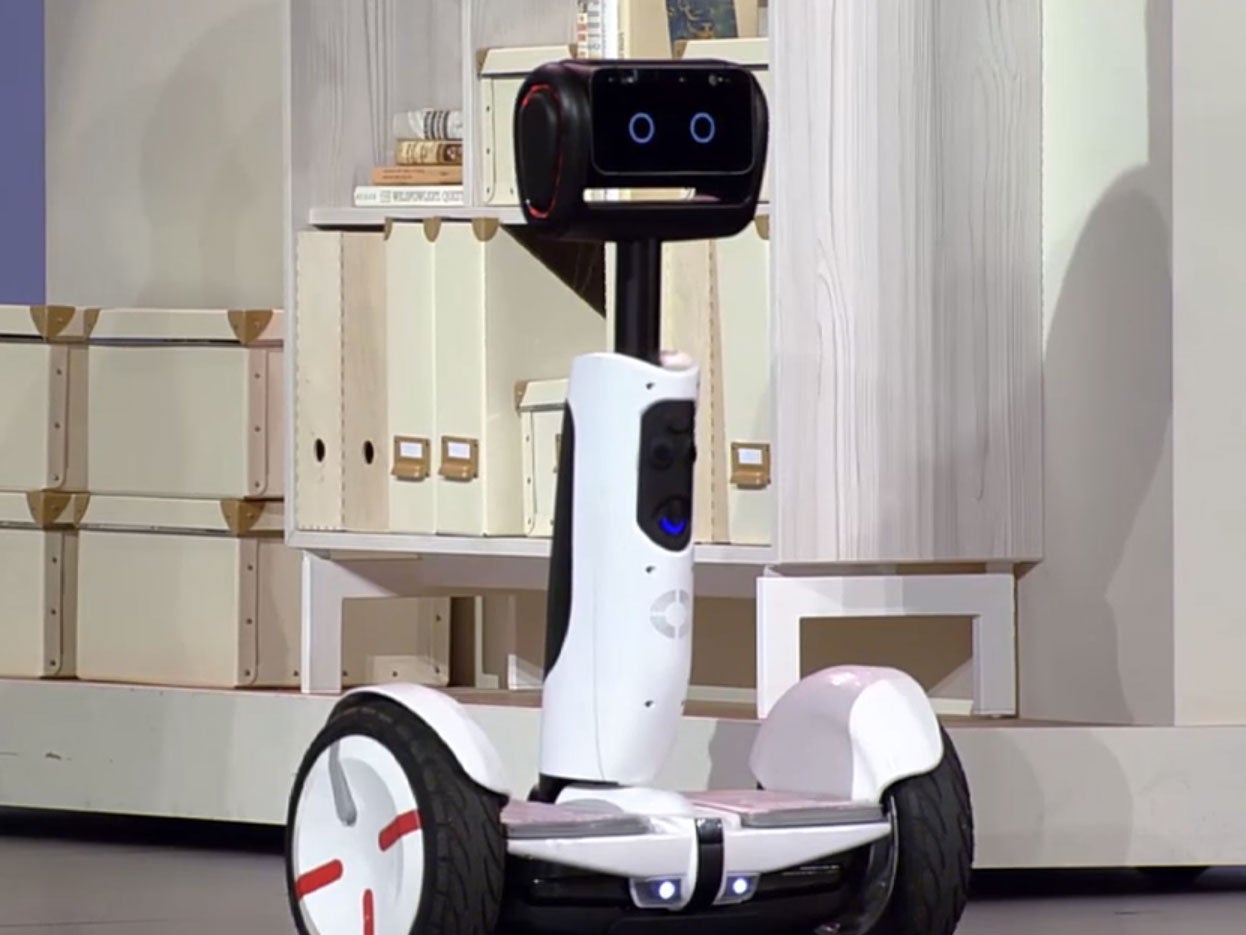CES 2016: Intel and Segway have teamed up to create a hoverboard robot butler
The strange device will apparently be opened up to developers in the second half of this year

Your support helps us to tell the story
From reproductive rights to climate change to Big Tech, The Independent is on the ground when the story is developing. Whether it's investigating the financials of Elon Musk's pro-Trump PAC or producing our latest documentary, 'The A Word', which shines a light on the American women fighting for reproductive rights, we know how important it is to parse out the facts from the messaging.
At such a critical moment in US history, we need reporters on the ground. Your donation allows us to keep sending journalists to speak to both sides of the story.
The Independent is trusted by Americans across the entire political spectrum. And unlike many other quality news outlets, we choose not to lock Americans out of our reporting and analysis with paywalls. We believe quality journalism should be available to everyone, paid for by those who can afford it.
Your support makes all the difference.Just in case you didn't know that the future is right now, Segway and Intel have teamed up to create a hoverboard robot butler.
The sci-fi device, which is a self-balancing personal transporter with a built-in interactive robot, was uneviled at Intel's keynote speech at the Consumer Electronics Show (CES) in Las Vegas.
A number of companies have put their names to the device - Intel, Chinese electronics company Xiaomi, Xiaomi portfolio company NineBot, and Segway. Segway were pioneers of the self-balancing personal transport device, but their original device, released in 2001, was far too costly and bulky to ever reach mass popularity.
However, they seem to have noticed the recent popularity of 'hoverboards' and created their own version - we don't know too much about it now, but it certainly looks much more sturdy and less prone to explosion than most of the self-balancing scooters currently taking over the UK's high streets.
The oddest moment of the keynote came when the transporter's other feature was revealed - a small pop-up screen with two anthropmorphic eyes appeared from the top of the device and started speaking.
The transporter, now in robot mode, began moving around the stage and responding to the speakers' commands, like a good robot butler should.
It's not immediately clear what exactly the robot does - demonstrations showed it could use its built-in cameras to follow someone, and a pair of clip-on arms made it look a bit more robot-like, but that's it.
We'll be sure to see more interesting features once a developer version of the device is rolled out the second half of this year. Intel is opening up the platform to creators and developers, in the hopes that they'll be able to come up with some practical ways to take advantage of the robot's functions.
It'll be interesting to see what the developers come up with - there's a lot of potential in the cameras and the screen, and speaking robots like this one have successfully been used help teach children with intellectual disabilities.
In the meantime, your dream of owning a robot butler who can give you zippy piggyback rides around town could be one step closer.
Join our commenting forum
Join thought-provoking conversations, follow other Independent readers and see their replies
Comments